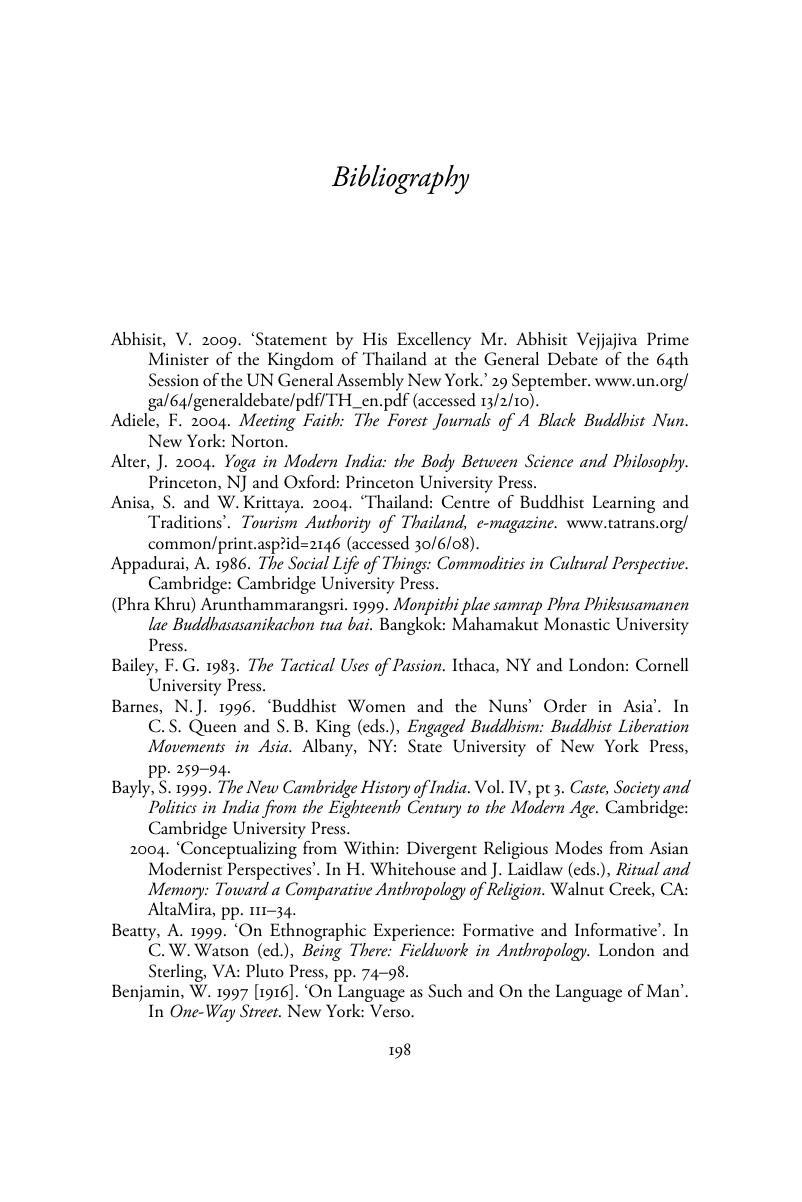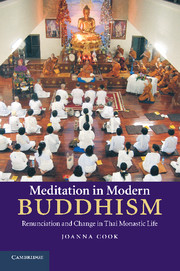Book contents
- Frontmatter
- Contents
- Acknowledgements
- List of map and figures
- Notes on language
- Map 1 Map of Thailand
- 1 Meditation and monasticism: making the ascetic self in Thailand
- 2 Meditation and religious reform
- 3 The monastic community: duty and structure
- 4 Meditation as ethical imperative
- 5 Language and meditation
- 6 Monastic duty, mindfulness and cognitive space
- 7 Money, mae chee and reciprocity
- 8 Hierarchy, gender and mindfulness
- 9 Monasticization and the ascetic interiority of non-self
- Appendix: Ordination transcript for an eight-precept nun (mae chee)
- Bibliography
- Index
- References
Bibliography
Published online by Cambridge University Press: 03 May 2011
- Frontmatter
- Contents
- Acknowledgements
- List of map and figures
- Notes on language
- Map 1 Map of Thailand
- 1 Meditation and monasticism: making the ascetic self in Thailand
- 2 Meditation and religious reform
- 3 The monastic community: duty and structure
- 4 Meditation as ethical imperative
- 5 Language and meditation
- 6 Monastic duty, mindfulness and cognitive space
- 7 Money, mae chee and reciprocity
- 8 Hierarchy, gender and mindfulness
- 9 Monasticization and the ascetic interiority of non-self
- Appendix: Ordination transcript for an eight-precept nun (mae chee)
- Bibliography
- Index
- References
Summary

- Type
- Chapter
- Information
- Meditation in Modern BuddhismRenunciation and Change in Thai Monastic Life, pp. 198 - 209Publisher: Cambridge University PressPrint publication year: 2010



